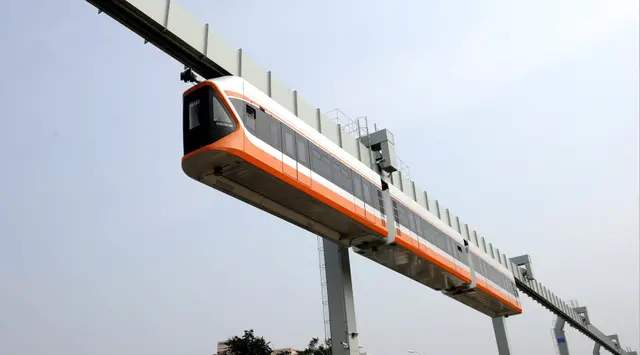Two months after his management comeback in March 2010, Samsung Electronics Chairman Lee Kun-hee unveiled an eye-popping investment plan through 2020. Lee stepped down after receiving a three-year suspended jail sentence for tax evasion and breach of trust in 2008.
Under the 10-year scheme, the Samsung Group, South Korea's largest family-controlled conglomerate, planned to inject 23.3 trillion won (about 22 billion U.S. dollars) by 2020 into five new growth engines, including biomedicine and medical equipment.
Contrary to its ambitious goal of generating 50 trillion won in sales by 2020 with the investment, it failed to show any tangible achievements. Solar cell business, Samsung's another new growth engine, was lackluster amid global oversupply, and the LED unit had yet to beat global competitors.
Healthcare businesses had made no profits, with the group's medical equipment unit Samsung Medison and its biopharmaceutical business Samsung Biologics logging net losses in 2012, according to the corporate information provider CEO Score.
Seemingly conscious of the underperformance, Lee chanted a slogan "Change once again" in his New Year's message to executives and workers of the group, heralding a renewed spur to the new growth businesses.
The spur was expected to gain further momentum, especially in the healthcare sector, thanks to the South Korean government's three-year economic restructuring plan, which will be centered on resolving structural and chronic problems inherent in the economy.
The economy developed faster than any other Asian economies, but it entailed various side effects such as lack of innovation and chronically flagging domestic demand caused by heavy dependence on large exporters.
To boost innovation, a convergence between technologies and industries will be encouraged in the name of the creative economy, advocated by South Korean President Park Geun-hye at the very beginning of her presidency.
Five promising service sectors, including the healthcare industry, will be fostered through overhaul of regulations to shore up domestic demand-oriented industries and reduce dependence on large exporters.
Among Samsung's new growth engines, the healthcare sector was in a complete sync with the creative economy as Samsung was expected to push for a convergence between its main IT sector and the healthcare business.
Last September, Samsung declared a change in mobile trend by rolling out its Galaxy Gear smart watch, the first-generation wearable device that could be matched with the anticipated growth of telehealth in the country.
Samsung has already been operating hospitals. The non-profit Samsung Life Public Welfare Foundation, launched in 1982, opened the Samsung Medical Center in 1994, consisted of Samsung Seoul Hospital, Kangbook Samsung Hospital and Samsung Changwon Hospital. The medical center reached an agreement in 1997 to train students of Sungkyunkwan University.
"Five service industries were picked as their bright prospects and strong competitiveness can be boosted through the regulatory reform," Vice Finance Minister Choo Kyung-ho said at a meeting with foreign correspondents on Wednesday.
Touching on the healthcare sector, Choo said that there were many well-educated, competent figures working at hospitals in South Korea, noting that the regulatory reform can help local healthcare businesses make inroads into overseas markets with their high-quality human resources.
To nurture a global healthcare giant from South Korea, Samsung may fit the best with strict requirements as it has the capital strength, manpower, brand value and technical prowess in the IT industry as well as the will to invest in the healthcare business.
The other way, the South Korean government might have pushed to nurture the healthcare industry as Samsung expressed its intention to foster the sector as its new growth engine. Samsung Electronics has a big influence on the economy, with its market cap on the main bourse accounting for around 15 percent of the total.
The Finance Ministry unveiled its fourth investment activation plan under the Park administration last December, saying that the healthcare industry failed to advance in the past, despite its great growth potential, due to conflict of interests.
Under the plan, medical corporations, all of which are non- profit in South Korea, will be allowed to set up for-profit units to prevent management aggravation of small hospitals. Large university hospitals have been permitted to run profit-making subsidiaries as they are affiliated with school corporations.
Mergers and acquisitions (M&A) will be made possible among hospitals, which the government claimed will lead to a rise in M&A between small hospitals and the easing of their management worsening.
Telehealth, which refers to the remote monitoring of diseases and symptoms by the use of medical devices and telecommunications technology together, will be allowed mostly among small hospitals.
The Ministry of Health and Welfare said on its website that telehealth will be pushed ahead mostly with town hospitals, noting that people living in islands and mountains and the elderly and the disabled who have troubles in seeing a doctor will benefit from the remote examination and treatment.
Revenue in the global telehealth market was expected to surge to 4.5 billion U.S. dollars in 2018, rising by a factor of more than 10 compared with 440.6 million dollars in 2013, according to market researcher IHS Technology.
 简体中文
简体中文

